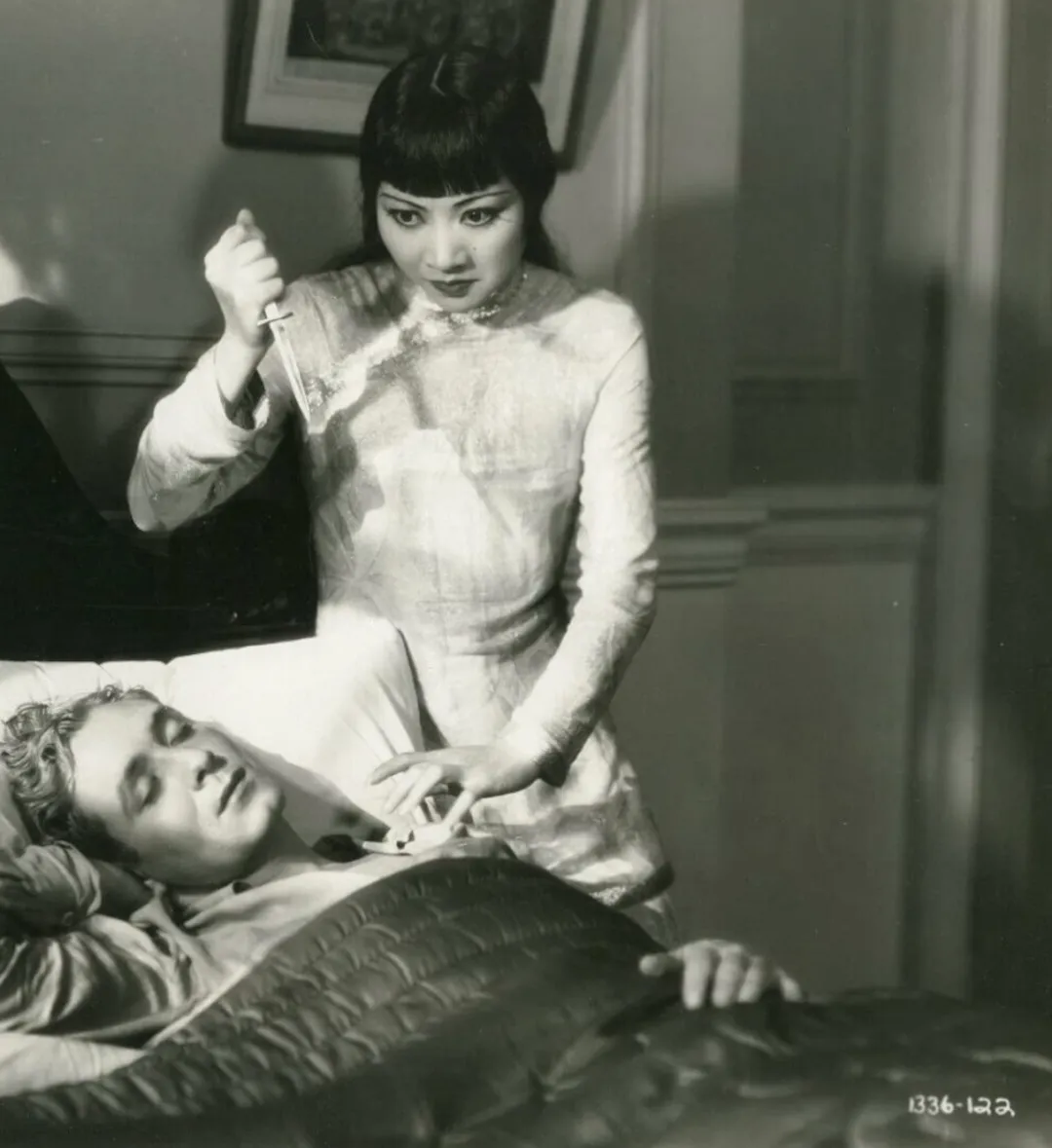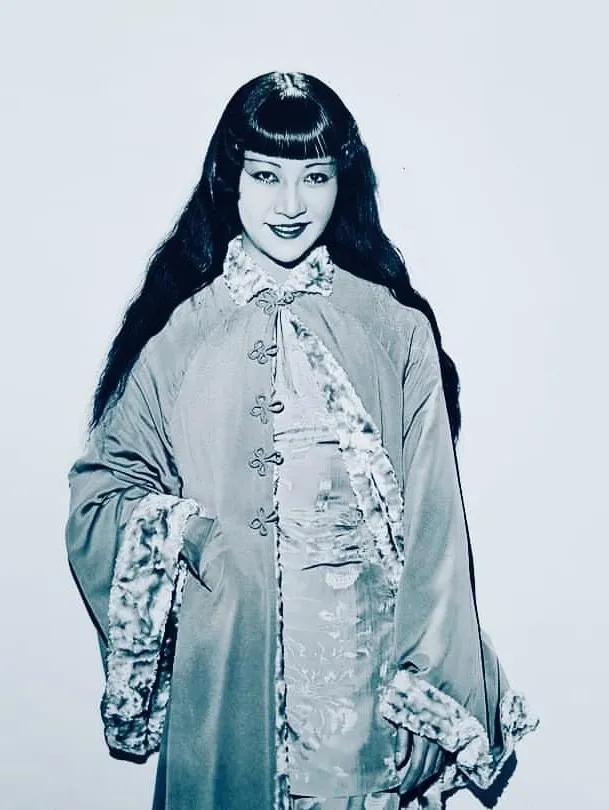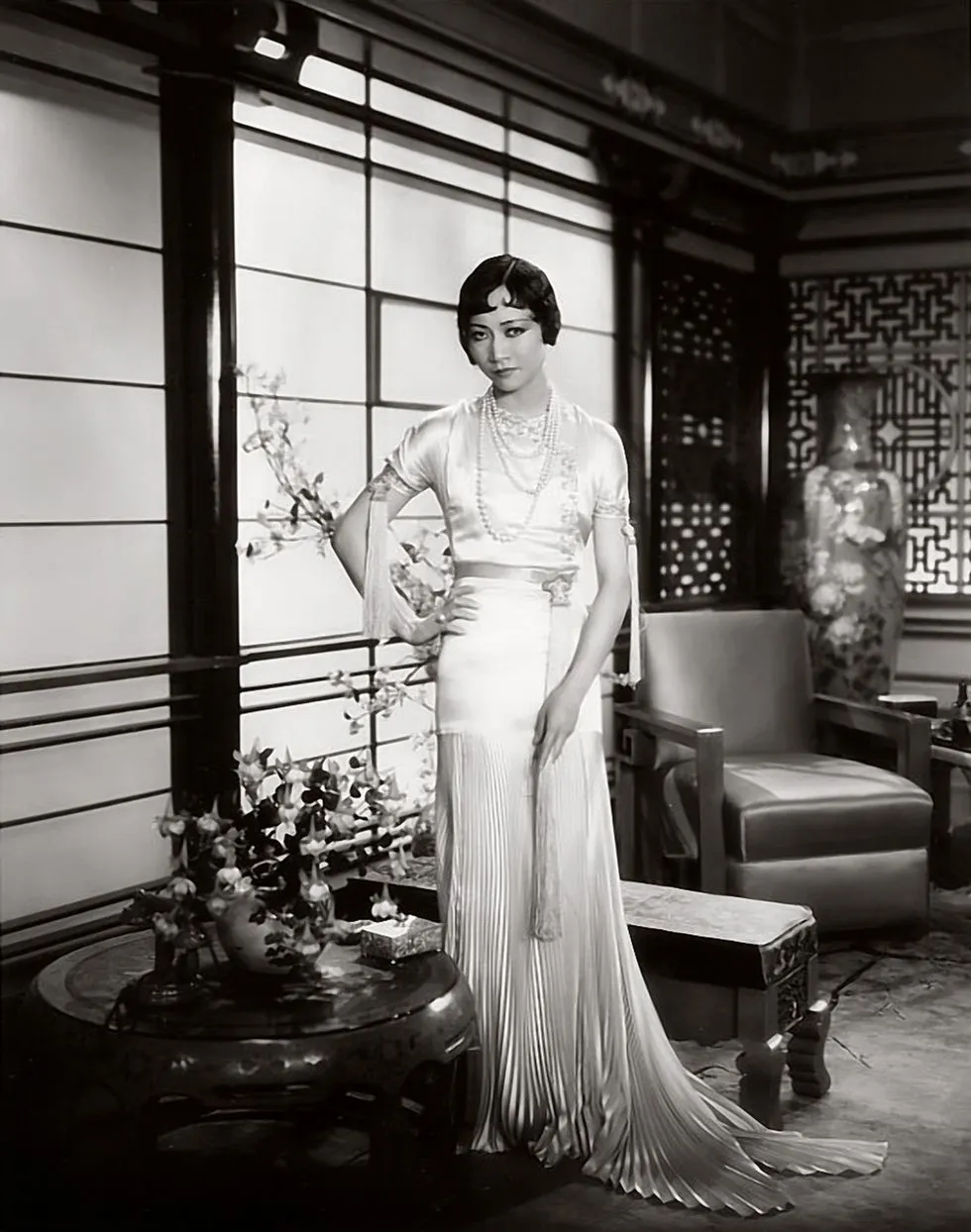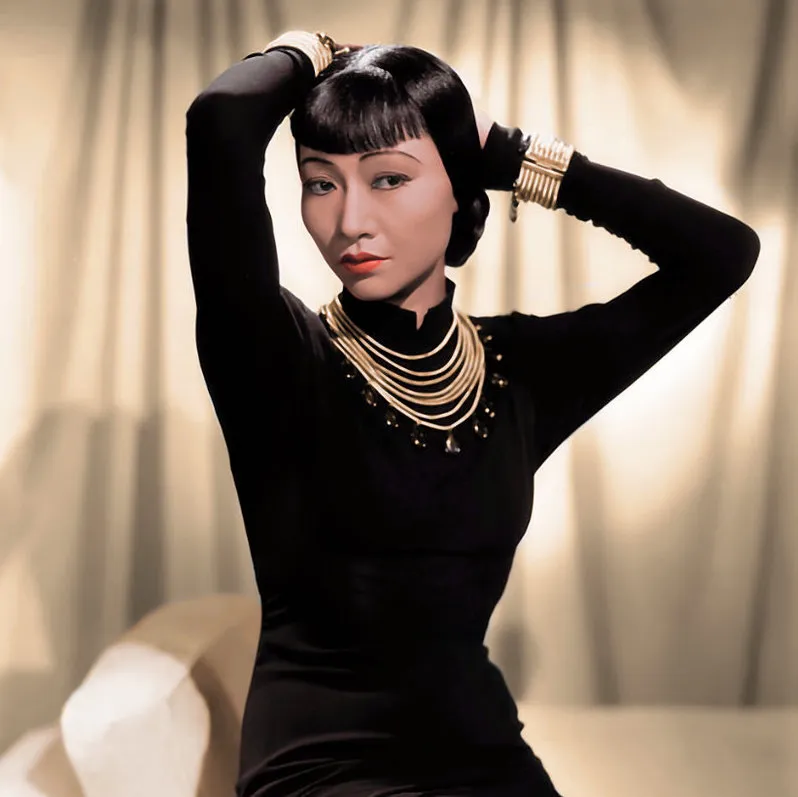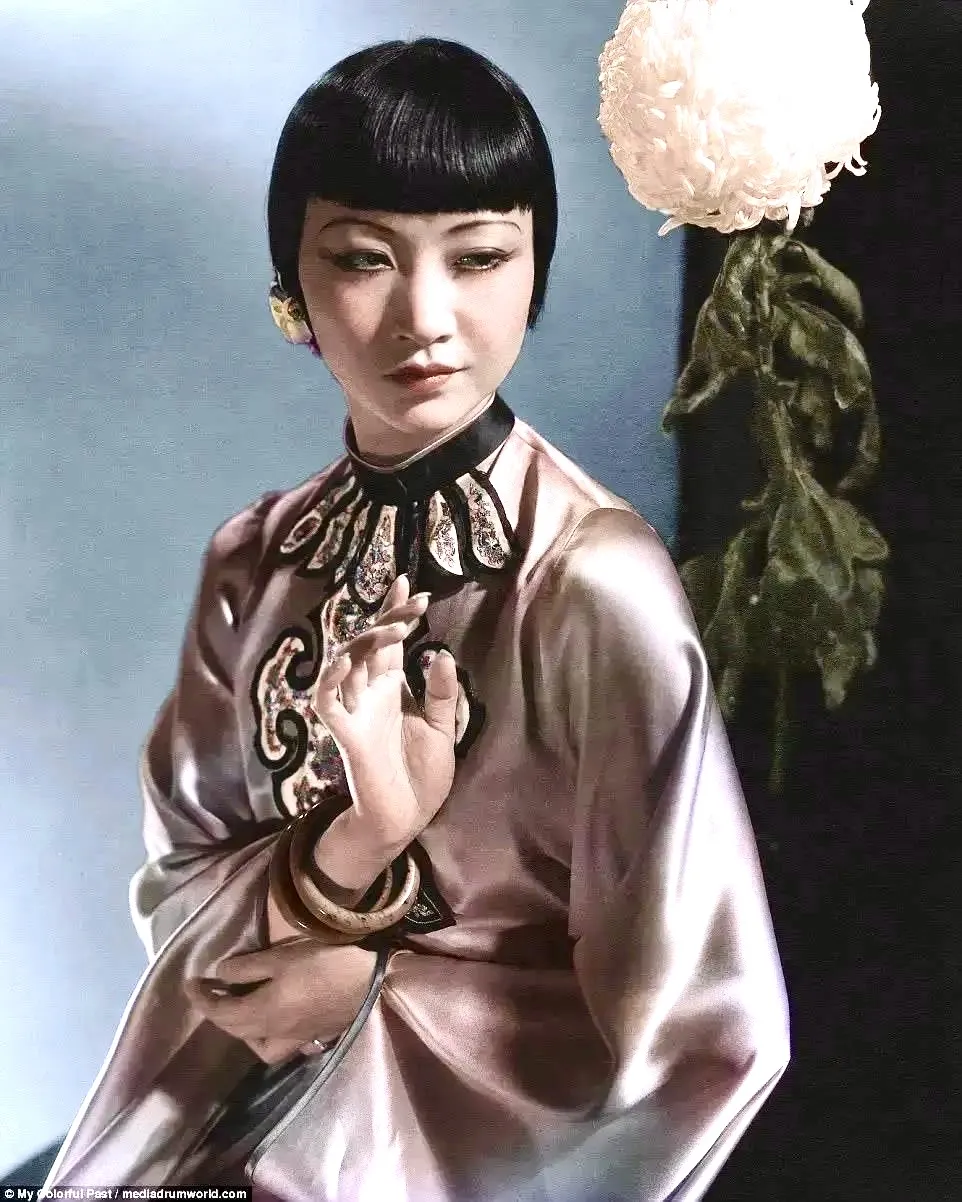
The beauty of gardenias and jasmines intertwined is truly unforgettable. In the previous feature, we briefly introduced Anna May Wong. Those familiar with Chinese - American actors in Hollywood surely know this name. Even if not, you've probably seen her iconic photos. With big bright eyes, classic willow - leaf eyebrows, high cheekbones, and a fringe, dressed in a cheongsam, she was a well - known Eastern face in early 20th - century Western society. Her hairstyle, makeup, and clothing style were emulated by countless Western girls. She was also the first Chinese actress to bring the cheongsam image to Hollywood. Let's explore her story and the beauty of the cheongsam she presented.
Anna May Wong was born in Los Angeles, US, with her ancestral home in Taishan, Guangdong. Her family was third - generation immigrants. Her grandfather was among the earliest Chinese laborers who went to California to pan for gold. Her father, Huang Shanxing, held traditional ideas, favoring sons over daughters and longing to return to his roots. He returned to Guangdong, got married and had children there, then came back to the US and married Anna May Wong's mother. Before her, there was an elder sister, and they weren't valued in the family, constantly oppressed by the son - preference idea.
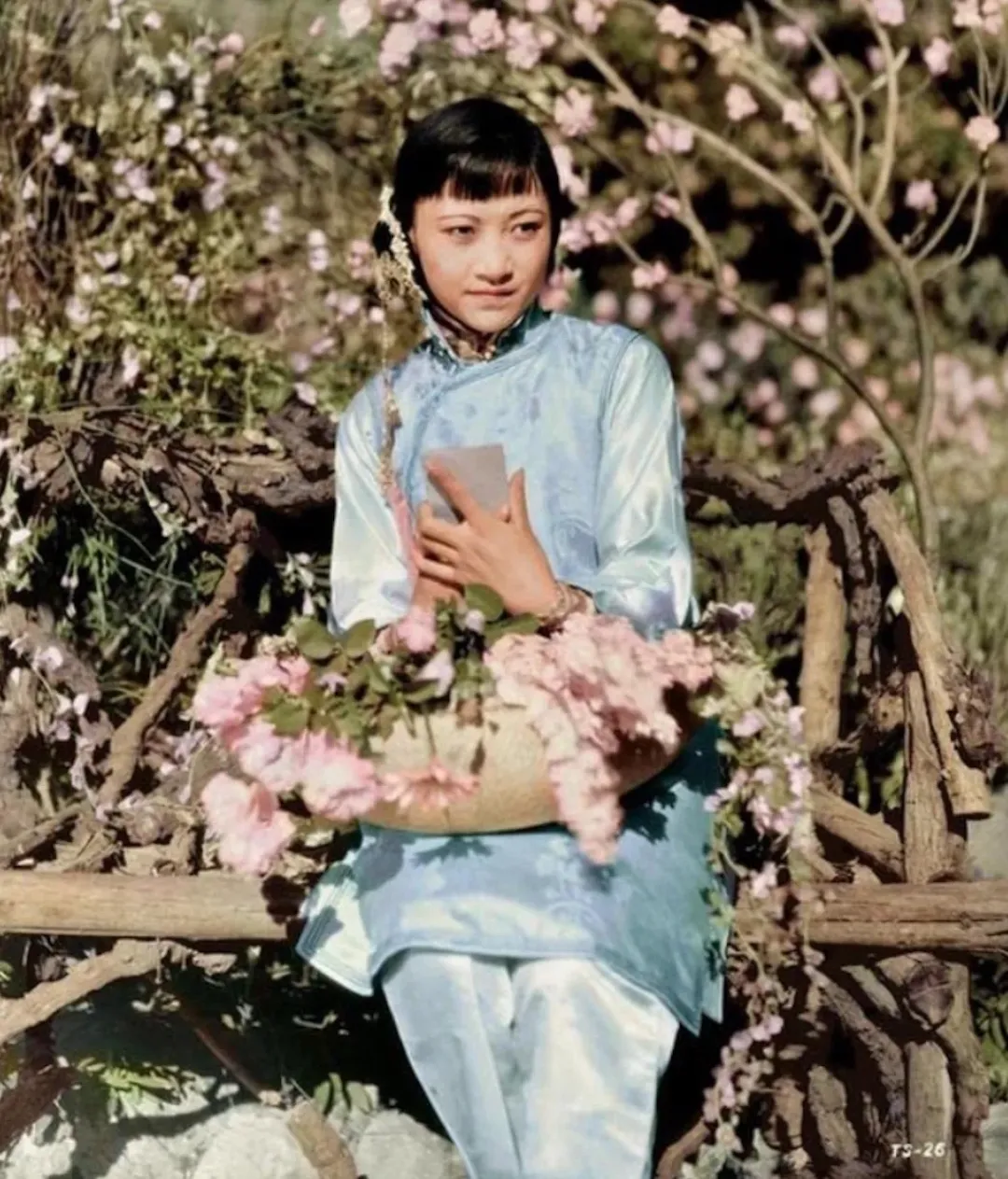
American media reported that since her birth, her mother kept having children. In that era, women faced many difficulties. Anna May Wong had eight brothers and was the second - oldest. The youngest boy was 17 years younger. Her childhood was unhappy. With many children in the family, girls took on household chores and cared for younger brothers. Living in the US in the early 20th century, she faced racial discrimination as an Asian woman, being at the bottom in both American society and her traditional Chinese family.
The Wong family lived in Chinatown, running a laundry. At that time, Chinatown in the US was a law - less area where Asians, Mexicans, and Eastern Europeans gathered. Cultural differences and gray industries made it a 'gray symbol'. Growing up in such an environment, Anna May Wong became independent and precocious. She fell in love with movies at a young age and was determined to be an actress, which was unacceptable to her feudal family. Her parents regarded her acting career as a disgrace.
However, she was lucky to catch the early booming period of Hollywood. In 1922, at 17, she starred in 'The Toll of the Sea', one of Hollywood's first color movies. It was the first time an Asian face entered Westerners' vision. A Japanese film critic said no Japanese actress could surpass her acting skills. Through this movie, she became famous overnight. She played a Chinese woman who saved an American, fell in love, was abandoned, gave birth alone, and finally committed suicide. This self - destructive role fit the Western stereotype of Eastern women.
In 1924, she was invited by Douglas Fairbanks to participate in 'The Thief of Bagdad'. The movie was a huge success at the box office, and she became a popular Hollywood actress at 20. But she was disliked by her father and boycotted in China for playing a sexy and tricky Mongolian slave. This role made her a representative of Hollywood's sexy actresses but also brought her many similar characters later, which were proof of racial discrimination.
Anna May Wong once complained in an interview that she was tired of playing villainous Chinese roles. Laws in the US restricted her marriage, activities, and on - screen kisses. These limitations made her play supporting roles. The situation was also faced by later Chinese - American actresses like Wu Junmei and Chen Chong.
In 1928, she left Hollywood for the more open European film industry. She first went to Germany, learned German in a few months, and shone in German sound movies. An Austrian critic praised her performance. Then she went to the UK, starred in many movies and plays. In 1929, 'Piccadilly' (also known as 'The Limehouse Blues' in some translations) made her a hit in Europe. She played Shosho, a beautiful and ambitious supporting role, which won her great honor and popularity. She was even invited to a British royal banquet.
Her success in Europe was the result of decades of hard work. Her acting experience dated back to childhood. She often performed in front of a mirror with dolls and skipped classes to go to film sets. She once said she gave herself 10 years to be a successful actress. She incorporated different art forms into her performances, like a cultural melting pot.
Anna May Wong combined Eastern and Western charm, leading the fashion trend in Europe. Her style, including her fringe, willow - leaf eyebrows, and cheongsam, was very popular. British girls pursued her skin tone. Many men were also infatuated with her. Composer Constant Lambert wrote poems for her, and BBC reporter Eric Maschwitz wrote lyrics for her. French 'Vanity Fair' published her photo album.
She was the first to bring the Chinese cheongsam to Hollywood. During a trip back to China, she fell in love with Chinese culture and the beauty of the cheongsam. In 1934, in 'Limehouse Blues', she wore a floor - length cheongsam with golden dragon scales, designed by Travis Banton, and was rated 'the best - dressed woman in the world'. In 1937, she showed different styles of cheongsams, including slim - fitting, high - slitted ones, and paired them with furs. She liked cheongsams with distinct Chinese embroidery patterns.
Her beauty inspired many designers. British shoe brand Charlotte Olympia reproduced her image on high - heeled shoes, and Chinese - American designer Anna Sui paid tribute to her with a collection. Due to the famous cheongsam in 'Limehouse Blues', designers still remember her. In 1973, the Asian Fashion Designers Association named its annual award after her.
Although Anna May Wong suffered from racial discrimination and role limitations during her lifetime, she tried her best to enrich her roles, promoting Chinese culture in the West and using her performance fees to support the fight against Japanese aggression. She became the first Chinese on the Hollywood Walk of Fame, the first female actress on an American coin, and one of the four silver - cast Hollywood ladies on the Hollywoodland sign. Her life can be summarized as 'She transcended national boundaries in search of truth'.
